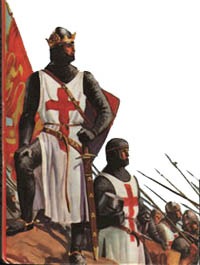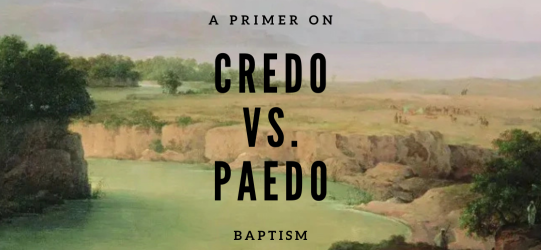With all the mention of Islamic terrorism in the news, I’ve heard reference made often to the Crusades. Islamic terrorists claim their attacks on Western non-combatants are a response to crusading forces, and Western leaders have cited the crusades as proof that Islam is not the only religion with a violent component: Christians waged their own version of jihad in their crusades against Muslims.
Curious to learn more about Medieval history and the Crusades, I turned to The Concise History of the Crusades by Thomas Madden, a medieval history scholar from Saint Louis University.
Below is my synopsis what Madden says prompted the Crusades. This is not an attempt to theologically justify the Crusades. Nor is this to say that Europeans were all good in the Crusades. Certainly, there were abuses, sometimes very brutal abuses which have left a stain on the western church. It is only to summarize Madden’s point: The Crusades were a response to Islamic military aggression and conquest.
Holy War in Islam
From their early beginnings, both Christianity and Islam held different views of warfare. Mohammed and his early followers spread their religion with the sword, but Jesus and His apostles insisted on being non-violent and spreading their beliefs with words.
In the seventh century, Mohammed founded Islam in Arabia. He taught that Jews and Christians had corrupted monotheism, and accordingly he called the world back to what he deemed the true worship of God. Mohammed became the ruler of Medina in 622 AD, and from Medina Islam spread. At the very beginning Islam was just as political as it was religious.
Mohammed waged war, first against other Arab towns and then against Mecca itself. Muslims called each of these wars a jihad, or “struggle.” Soldiers who died in jihad were thought to be martyrs of the faith. At the moment of their deaths, Muslims believed, the fallen in jihad rose instantly from the sands of battle to their reward in a lush and sensual paradise (2-3).
Islam started as a movement of political conquest by dividing the “world into two spheres, the Dar-al-Islam (Abode of Islam) and Dar al-Harb (Abode of War)” (p. 3). The former were areas ruled by Muslims and Islamic law, while the latter were to be captured by Islam through Jihad. Muslims considered Christian Europe Dar al-Harb and sought to conquer it by Jihad.
Just War Theory in Christianity
Unlike Mohammed, Jesus Christ and His apostles did not advance their religion by military conquest. Instead, Jesus taught that His Kingdom was not of this world and he told his followers to love their enemies. The Apostle Paul taught the church to arm itself with spiritual weapons to fight spiritual powers, instead of physical weapons to fight physical powers.
As Christianity grew in influence it eventually came into “direct contact with statecraft and warfare” (p. 2). This was inevitable. Jesus taught His followers to love their neighbours. Eventually those followers of His who also held political sway had to carefully think about military engagement. As such, in the fifth century St. Augustine developed Just War Theory, and he argued that the military power of the state should be used to love the innocent by protecting them from the wicked who would otherwise prey on the weak.
St. Augustine outlined the necessary conditions for a Christian leader to wage a just war, but he was quick to insist that the faithful not engage in wars of religious conversion or for the purpose of destroying heresies or killing pagans. Warfare was a necessary evil sometimes forced upon a good leader – it was not to be a tool of the church (p. 2).
Augustine’s understanding of a just war continues to influence the Western conscience as it pertains to military engagement. War is not to be desired, but when it is necessary it is only to be used to fend of predators and protect the innocent.
Whereas Mohammed and his early followers spread Islam by military conquest, Jesus and His early followers spread Christianity without the use of force. Christianity only developed a doctrine of warfare by necessity, and that doctrine sprang from a desire to use force as a means to love the vulnerable. Islam from its inception under Mohammed, unlike Christianity, used force to conquer non-Islamic peoples.
Jihad and Just War in the Spanish Reconquesta
After Mohammed’s death in 632, Islam spread rapidly. Islam conquered Persia, Egypt, and Syria by the 8th century. Eventually Islamic forces took all of North Africa and crossed the Strait of Gibraltar to establish their dominance in Spain. Attempting to spread further into France, “Frankish leader Charles Martel defeated the Muslims” in 732, and he drove “them back into Spain” (p. 4). Eventually, Islam was defeated in western Europe.
Western soldiers and theologians pointed back to Augustine’s Just War Theory which they understood to legitimize the reconquest of Spanish lands lost to Islamic conquest. They called the wars in Spain the Reconquesta, or “reconquest.” “During the first centuries of the Reconquesta, the church promoted the war as a just and appropriate reaction to Muslim aggression” (p. 4). The Reconquesta in the West laid the seeds for the Crusades to the East.
Constantinople and the Crusades
While western Europe fought Islam in Spain in the eighth century, eastern Europe was under Islamic threat by the tenth century. Seljuk Turks were pressing in on Byzantium. “The Seljuks were Muslim,” and they “had swept into the region early in the century, conquering Armenia, Syria, and Palestine” (p. 5). Afterwards, “They destroyed some churches, murdered clergy, and seized pilgrims” (p. 5). The Muslims pressed east, and eventually “the citizens of Constantinople could look across the Bosporus and see the land of the Turks” (p. 5). Eastern Europe seemed destined to fall.
As eastern Europe came under siege by Islam, western Europe had already been fighting Islamic and other invading forces for two centuries. As such the West had “become in many respects an armed camp. Fortified castles dotted landscapes. Armed knights and trained infantry were everywhere” (p. 6). Pope Gregory VII (1073 – 85) sought to unite the western armies and march east to help fight the Islamic invaders.
He “did not characterize this planned expedition as a holy war. Instead, he saw it as an errand of mercy and an act of charity.” After all, “Christians of the East had suffered mightily at the hands of the Turks. It was only right that their fellow Christians in the West should sally forth to help reclaim their lands and property” (p. 7). To him, this was a just war.
Pope Urban II eventually picked up where Gregory left off, and on November 27, 1095, he preached the First Crusade.
He called the knights of Christ to take up a war of liberation. The Christians of the East must be free from the brutal and humiliating conditions of Muslim rule. With the help of the West, Constantinople, the greatest Christian city in the world, could be liberated from the danger that beset it daily (p. 7).
Urban refused to settle for only liberating Byzantium, and he wanted to march further east to Jerusalem. Europeans had for centuries made pilgrimages to Jerusalem to visit the actual land of Christ, but Islamic conquests made that impossible because the region became a deadly place for Christians. Urban explained,
They [the Turks] have completely destroyed some of God’s churches and they have converted others to the uses of their own cult. They ruin the altars with filth and defilement. They circumcise Christians and smear the blood from the circumcision over the altars or throw it into the baptismal fonts. They are pleased to kill others by cutting open their bellies, extracting the end of their intestines, and tying it to a stake. Then, with flogging, they drive their victims around the stake until, when their viscera have spilled out, they fall dead on the ground. They tie others, again, to stakes and shoot arrows at them; they seize others, stretch out their necks, and try to see whether the can cut off their heads with a single blow of a naked sword. And what shall I say about the shocking rape of women? (p. 8)
Europe was under military siege by Muslims, the Holy Land was militarily conquered by Muslims, and Christians were being tortured and raped by Muslims. So Urban sent preachers to fan out over western Europe to spread his message: Christian warriors were needed to liberate Christendom from Islam. The word crusade means “those signed by the cross,” from the Latin cruce signati. Under Urban II the crusades began, and crusaders crusaded to recapture Christendom with the sign of the cross.
Conclusion
Christians originally advanced their religion by peace, and the earliest Muslims, Mohammed included, did so by war. When Christian Europe first encountered Islam, it did so under the threat of Islamic conquest. As a response, Europeans with the Pope’s authorization fought back, first in the Spanish Reconquesta and then in the Crusades. In no way is this an attempt to theologically justify the Crusades. Nor is this an attempt to excuse their abuses, which are all well documented. It is simply to summarize what historian Thomas Madden says so well: The Crusades were Medieval Europe’s response to Islamic aggression.










